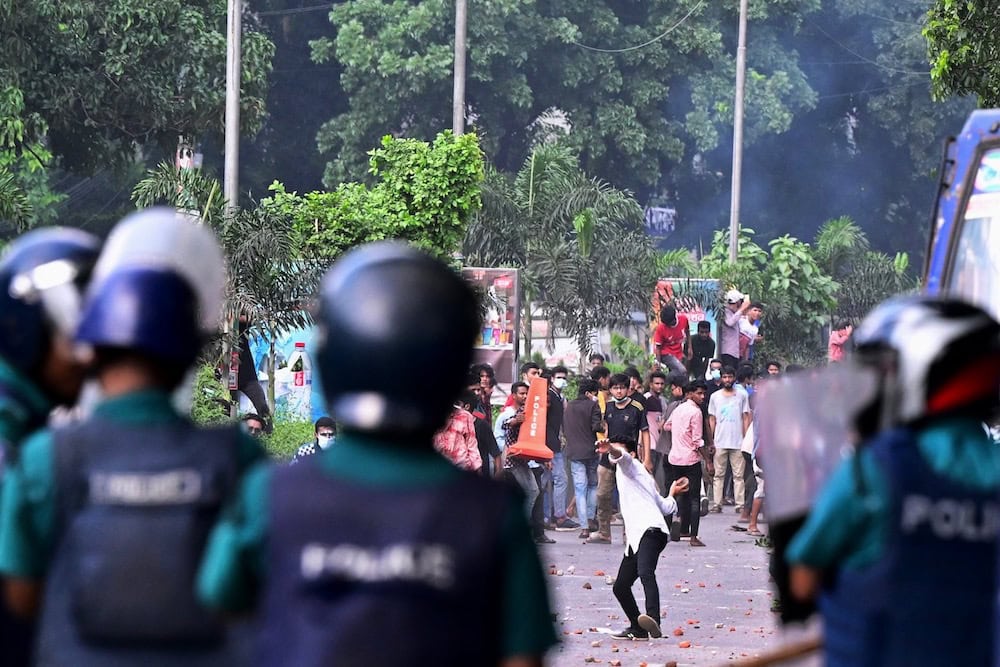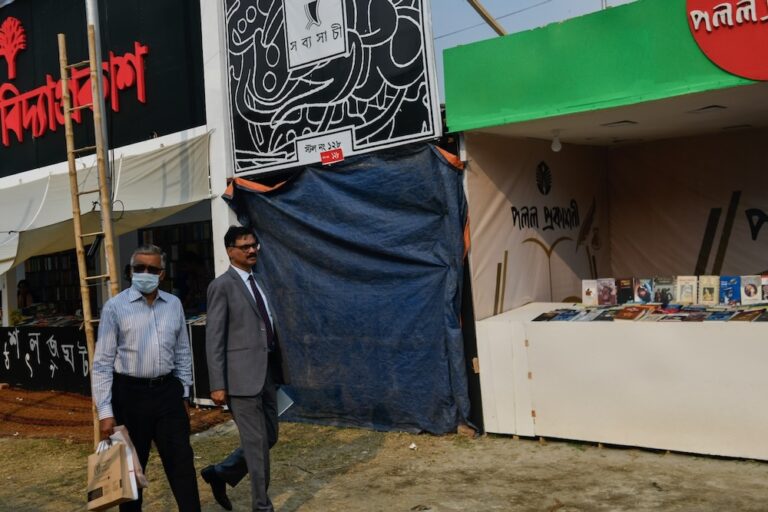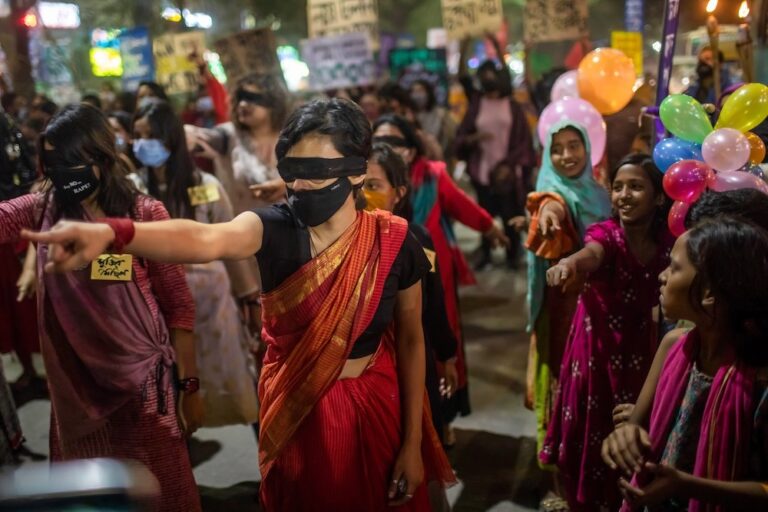For five days, the government imposed an internet blackout spurring misinformation and questions about the situation on the ground.
This statement was originally published on globalvoices.org on 25 July 2024.
Wanton violence and internet shutdown puts citizens in peril
Violence broke out in Bangladesh on July 15, after pro-government students and hired gangs attacked students protesting over a corrupt government quota system in different universities and institutions across the country. Over six people were killed in the initial clashes and hundreds were injured. On July 16, the government ordered the educational institutions to shut down. Student accommodations were vacated by July 17, and most of the students went home. Videos and images of police shooting student protestors were shared widely, stirring anger and inciting others to take to the streets in defense of the students, and in protest of a government that many saw as autocratic and reactionary.
On July 17 and 18, clashes between protesters and law enforcers spread across the country, as the student protesters announced a complete transportation shutdown, threatening that “no establishments, apart from the hospitals and emergency services, will be allowed to open, and no vehicles, except ambulance, will be allowed to operate.” On July 18, the protests become more violent leading to targeted arson, and vandalism on government key point installations (KPIs), damaging infrastructure like the new metro line, elevated expressway, the state TV office, post offices, and police stations. Officials claim these attacks were meant to overthrow the government, much like the protests-turned-coup in Sri Lanka in 2022. A curfew was declared on the evening of July 19, and most people stayed hidden away to escape the chaos. It is still in effect as of July 25.
For five days, the government issued a complete internet blackout, spurring misinformation and questions about what was happening in Bangladesh.
As of July 24, 2024, the total death toll had climbed to 197 people, including security personnel; most of the casualties occurred from July 19 to 21, when government forces were trying to defend people and state infrastructure from armed attackers. Thousands of people have been injured, including over 1,100 members of the police force. Between July 17 to 23, the police arrested 3,000 people on vandalism and destruction charges.
The quota system
The issue that started the initial protests was a government quota system that was initially meant to offer jobs to marginalized groups but has widely been coopted as a tool for corruption and nepotism. On July 4, 2024, the Appellate Division of the Supreme Court upheld a June 2024 High Court judgment that declared illegal a 2018 government circular abolishing the quota system in government services, which was the outcome of the 2018 Bangladesh quota reform movement.
Initially, the government refused to engage in discussion with the students to discuss their concerns, declaring it a sub-judice matter, and blaming the opposition Bangladesh Nationalist Party (BNP) for stirring up the students. However, the student protests forced the government to act.
The Bangladesh government first introduced the quota system for government jobs in 1972, the year after the 1971 liberation war and independence, as a way to honor their sacrifice and heroism. It has been a contentious issue in Bangladesh over the past decade. In 1976, the quota system was divided as follows: 40 percent based on merit, 30 percent for freedom fighters, 10 percent for war-affected women, and the remaining 20 percent based on district.
In 1985, the quota for women was expanded to include all women, and in 1997, as the number of those claiming freedom fighters’ quota positions began to decline, it was extended to the children of freedom fighters. In 2010, the freedom fighter quota was further expanded to include the grandchildren of freedom fighters. Given the number of state benefits for freedom fighters, there has been an increase in obtaining fake freedom fighter certificates, and people from non-freedom-fighter families claiming these benefits, including job quotas.
In July 2013, students first publicly protested the quota system. Several hundred job-seekers who did not pass the 34th Bangladesh Civil Service preliminary exam gathered in the Shahbag area, citing disparity as only 44 percent of jobs were available through merit (the rest were allocated as follows: Freedom Fighters 30 percent, Women 10 percent, Districts 10 percent, National Minorities 5 percent, and People with Disabilities 1 percent). However, their movement was unsuccessful after clashes erupted on the Dhaka University campus, where police and members of the ruling party’s student faction, Bangladesh Chhatra League (BCL) launched a violent assault against these protesters using lethal weapons and sticks. In response to these attacks, the anti-quota protests continued in other districts like Chittagong, Sylhet, and Rajshahi as students from other universities joined.
In 2018, the quota reform movement resurfaced. The protesters were attacked by the BCL on several occasions. On April 11, Prime Minister Sheikh Hasina announced that the quota system would be abolished, bringing an end to the protests. The official circular was published in October 2018, but there were sporadic protests until then, which were confronted by the BCL and the police, often ending in violence.
On June 5, 2024, the Dhaka High Court ruled on a writ petition filed by the descendant of a freedom fighter and six other individuals, overturning the October 2018 court order and reinstating the quota system. The anti-quota movement reignited the next day, and the government appealed the court order.
Who is behind these protests?
The student movement, which began with a single demand for quota reform, has spread across the country. Students from most universities and colleges participated in this movement uniting under the banner of the “Anti-Discrimination Student Movement.” They demanded to “abolish the illogical and discriminatory quotas in all grades of government jobs” and “pass a law in parliament to reform the quota system.”
Students have been using social media to organize this movement. Additionally, they have organized themselves into networks based on different universities, residential halls, and departments. Students have also been seen distributing leaflets in support of the movement at Dhaka University and residential halls.
During the protests, general people joined the students in support, however, by July 19th, most student protesters were not in the streets and some vested groups were seen. In the absence of internet and communication, it is hard to determine from all these conflicting claims from the government and other sources whether it was a true uprising against the current government. Moreover, the wanton damage and arson of KPIs creating anarchy and the quota movement leaders distancing themselves from violence indicate otherwise than a spontaneous democratic uprising and the presence of regime change actors (RCAs).
Internet shutdown and censorship
Amid protests, the 4G network was shut down by mobile operations at the Dhaka University area from the early hours of July 15. By July 16, reports emerged of widespread 4G disruptions and slowdowns at various universities across Bangladesh. The state minister of Telecommunication cited the reason as to curb the spread of rumors and maintain stability amid the protests and warned about the social media ban. Broadband was also shut down on July 18th night as the ministry and the Bangladesh Telecom Regulatory Commission (BTRC) continued to claim that some data centers were burnt down by protesters causing the disruption. However, reporters claimed no such critical damage was found when they visited the data centers and the shutdown was hurting the economy.
Broadband Internet was gradually restored on July 23 and July 24.
The mobile Internet remained blocked and as per an Ooni test on July 24, major social media platforms such as Facebook, Messenger, YouTube, WhatsApp (calling), and Instagram remained blocked. VPNs have been slow and Psiphon and Tor remain accessible.
The government’s path forward
After a special Supreme Court session on Sunday, the government published a notification on July 23, declaring 93 percent of future government jobs reserved for merit, 5 percent for freedom fighters and their descendants, 1 percent for small ethnic groups, and 1 percent for people with disabilities or third gender. The government has also set up a judicial commission to probe the death of the six students on July 16th as per their demand. The government is claiming that they have met most of the demands of the quota movement. However, a protest leader reacted “Our movement will continue until we reach a clear resolution and ensure justice for all the causalities.”
Primary schools and other educational institutes remain closed for an indefinite period as the country restores calm. As per the home minister, the curfew will continue until normalcy is restored.
It remains to be seen what will transpire in the coming weeks.



